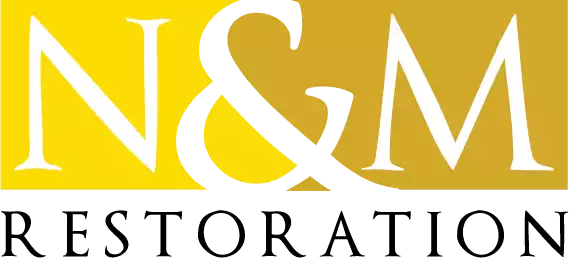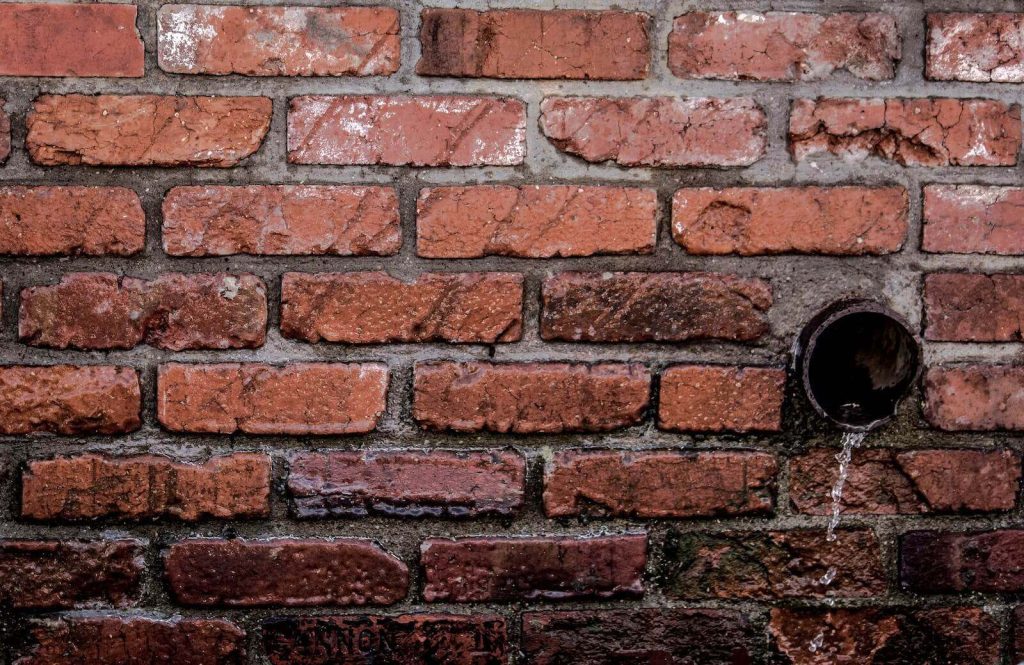Understanding the Essentials
Mortar joints, the spaces between bricks filled with mortar, are crucial in ensuring the structural integrity, weather resistance, and overall appearance of brickwork. The types of mortar joints chosen can affect the durability of the masonry, its ability to repel water, and even the historical authenticity of restoration projects.
At N&M Restoration, we delve deep into the details of various brick joints, recognizing that each type serves a unique purpose. Does this really matter? Yes it does, every minor attention to detail improves the install, repair and overall strength of your home and makes sure it lasts as long as possible for you. Our expertise extends across multiple mortar joints types, ensuring that every project we undertake is not only structurally sound but also aesthetically pleasing.
Why Selection Matters
Selecting the right type of mortar joint is pivotal for several reasons:
- Structural Integrity: The mortar joint is essential for distributing weight and stress throughout a brick wall. The right joint type can significantly enhance the wall’s strength and stability.
- Weather Resistance: Certain types are better suited for specific climates. For example, concave and V-joints are more effective in shedding water, and stopping water absorption and related damage in wet areas.
- Aesthetic Appeal: The style of mortar joint can dramatically alter the appearance of a brick wall. Whether it’s a flush joint’s clean finish or a raked joint’s shadowed effect, each style adds a distinct character to the structure.
- Historical Restoration: In restoration work, matching the original mortar style is crucial for the long-lasting strength of the structure.
As you can see, not all mortar is not created equal. The lay of the mortar has a big impact on the integrity of the brick. Ideally, mortar should seal the edges of the brick to prevent water from getting in. Let’s take a look at the types of mortar joints and which style offers the best mortar barrier.
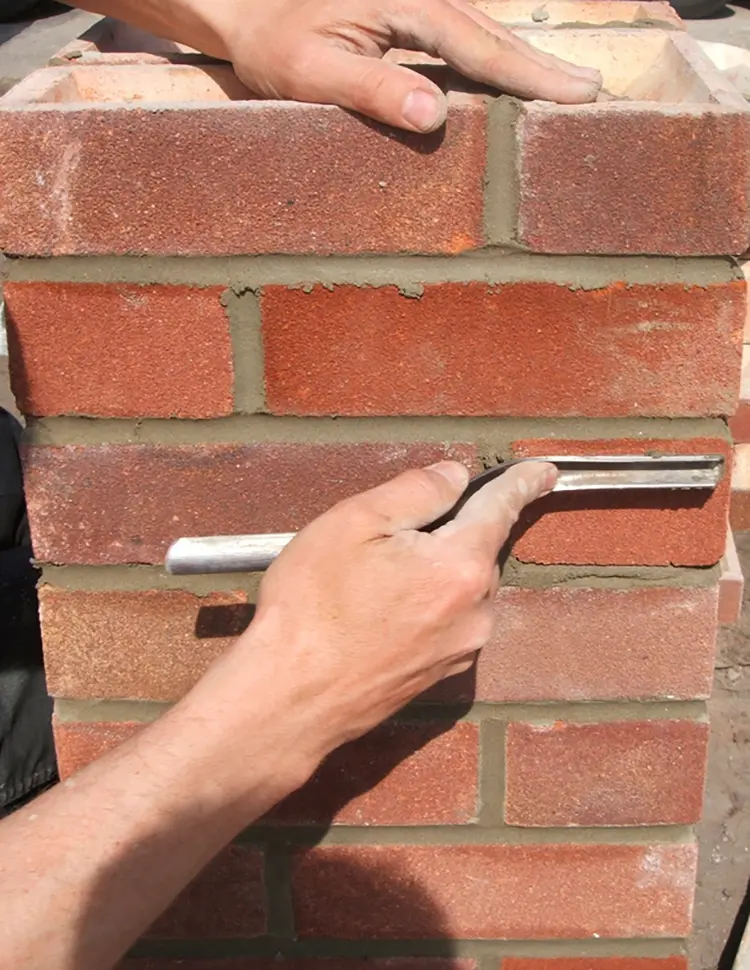
The Best Mortar Joint – Groove Joint or Concave Joint
The groove or concave mortar joint is the best style for moisture protection. You will see this on most brick homes, where the mortar has a slight curve inward. It looks as though the mortar has lightly been pressed by a finger, but bricklayers use a curved jointing tool to create groove joints. The recessed form of the mortar joint allows water to drain down the brick, which prevents mortar buildup easily.
Vee Mortar Joints (V Joints)
Vee joints are similar to groove joints, but instead of a smooth curve, they feature V-shaped indention. This style also does well at guiding precipitation down a masonry wall. In many cases, homeowners will opt for a Vee joint in favor of a concave joint because of a design preference.
Weather Joint
Weather joints involve the mortar cut at a diagonal angle. If you looked at the mortar from the side, it would appear to be in a triangular shape, with the smallest point of the triangle hitting the underside of the brick above. When laid at the opposite angle, the design is called a struck joints. Neither struck joints nor weather joints provide the strong watertight protection that groove joints offer.
Extruded Mortar Joint
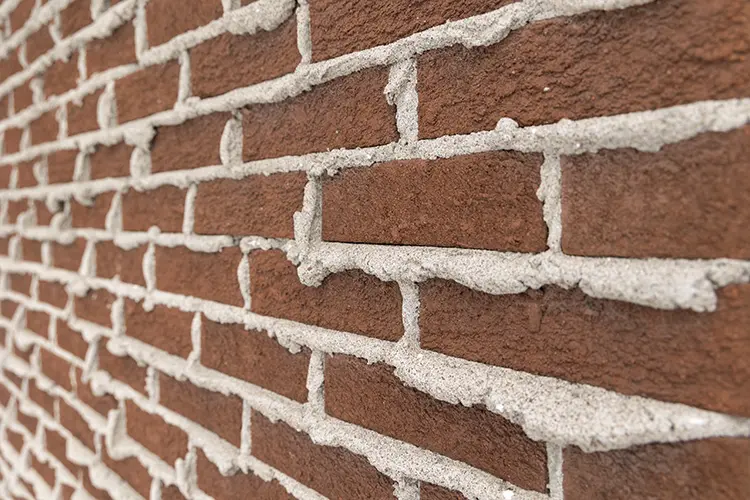
Have you ever seen bricks that look like mortar is oozing out from under them? That’s the result of extruded mortar joints. This style was popular in the 1930s to 1950s, but it has since become dated and downright messy looking.
In addition to being visually unappealing, these joints are highly susceptible to deterioration. The excess mortar squeezing out of the bricks becomes warn with persistent weather exposure. As the mortar begins to crumble, it damages the structure of surrounding bricks and leaves them susceptible to freeze thaw damage. It’s best to have this joint style replaced with groove mortar, if possible.
Raked Joint
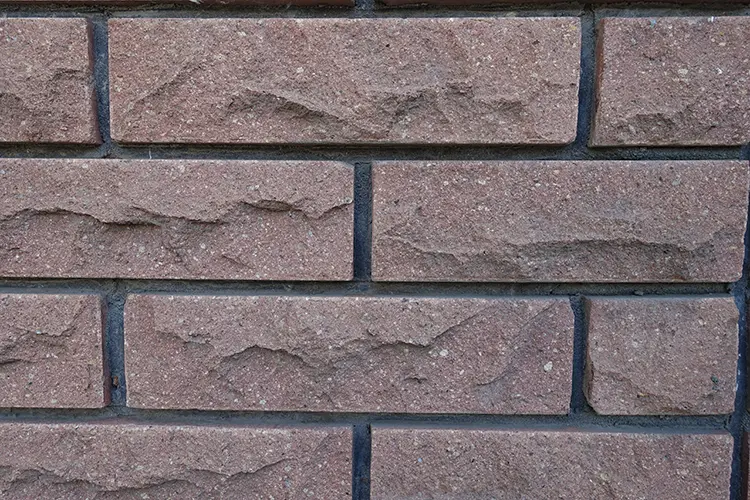
These joints do not come to the edge of the bricks. The mortar is raked out to expose the edge of the bricks. These joints can be compacted to provide a better seal, but the exposed edge of the brick is still subject to damage. Luckily, it is easy to turn these into a concave joint to improve performance.
Flushed Mortar Joint
Flush joints involve mortar that is directly level with the brick. The mortar has no curve or dent like you would find in other styles. It is difficult to create a tight bond between the brick and mortar in the case of a flushed joint. This style is usually used when a brick wall is covered with plaster or another exterior coating. Because flush joints are difficult to compress properly, they are still inferior to concave joints. They also take more time to complete, which adds to the labor expenses for brick repair or brick installation.
Other Types
There are many other styles to choose from, including grapevine joints, beaded joints, and more. They all have stylistic relevance, but they aren’t ideal for long-term performance. Concave joints are tested and proven to work in a variety of climates, including heavy rain and snowfall. You can’t go wrong with grooved mortar.
If your existing mortar is crumbling, cracking, or damaged in any way, you may be in need of repointing services. This process involves removing the exterior layer of mortar and replacing it with new, color-matched mortar. Repointing protects the structural integrity of the bricks and creates a firm seal against moisture.
N&M Restoration offers brick repair, tuckpointing, repointing, and other masonry services in Metro Detroit MI. To schedule your no-obligation consultation, please contact us at (248) 924-9798.
